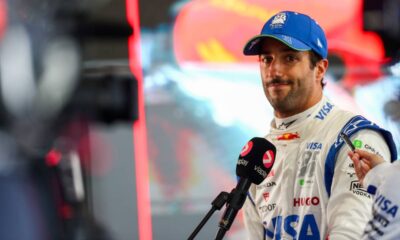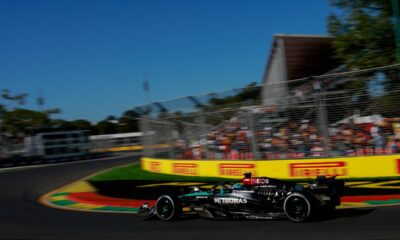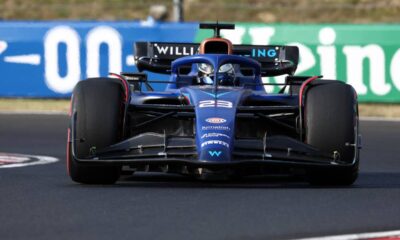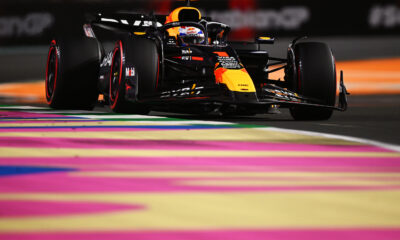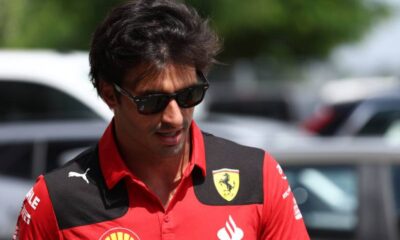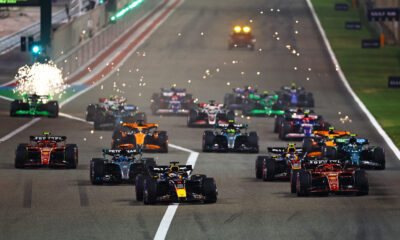More
The man who was one of the few to fight Schumacher is Mika Häkkinen
It has been 53 years since the world welcomed the future double F1 World Champion to Vantaa. Back then, Aila and Harri Häkkinen could not have imagined that their son would be a star in 30 years’ time and that the world of motorsport would be at his feet.
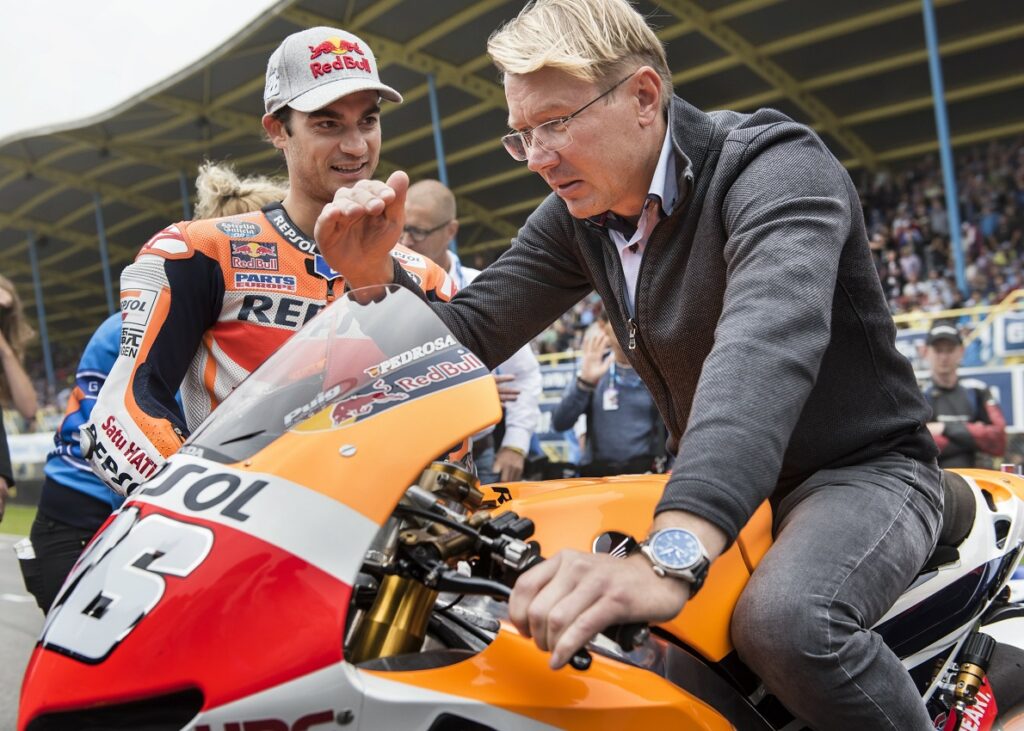
It has been 53 years since the world welcomed the future double F1 World Champion to Vantaa. Back then, Aila and Harri Häkkinen could not have imagined that their son would be a star in 30 years’ time and that the world of motorsport would be at his feet.
Like most famous F1 drivers, Mika Pauli Häkkinen started early. At the age of 5 he tried his first kart, winning his first race at the age of 8, the “Flying Finn”. Häkkinen then entered official competition in 1978 and was hardly looking for a challenger.
Already in the aforementioned 1978, he found no rivals at the Keimola circuit, where he began his karting career. Häkkinen defended the regional karting championship at the same circuit and a year later he moved from southern Finland to the north, where the Lapland karting championship awaited him.
And it was the only series in which he didn’t make the final podium in karting. That resulted in a fourth place finish in Lapland, but Häkkinen made up for it by winning the Swedish Lapland Cup on the same track. At the age of 12, it was time for another career move.
This was logically the national karting championship, specifically the F miniseries, FN series and FA series categories. In other words, these were karts in the 85 and 100cc categories, respectively.
Between 1981 and 1986, Häkkinen found himself as a loser only in 1982, when he finished second in the F miniseries. But otherwise he dominated across categories and earned a chance to drive formula races.
In 1987, we can call “The Flying Finn” the Nordic champion of the lower-performance formulas. Häkkinen dominated the Formula Ford 1600 championship in its Swedish, Finnish and Nordic forms.
The future world champion was thus logically set for another career move. The EFDA Formula GM Lotus Euroseries category was the stepping stone. In 1988 he finished second in this series, later winning the Opel-Lotus EDFA Euroseries category and receiving an invitation to the British Formula 3.
The year that is better known as the year of revolutions was Häkkinen’s worst year in terms of results in his junior career. He raced to seventh place with 18 points, which may have fallen short of some expectations.
But the young Finn didn’t have to be sorry for long. For a contract came up with the Marlboro team, who were looking for a full-time driver for their driving academy. Moreover, the selection committee for this driver was made up of names that are certainly not unfamiliar to most F1 fans.
The first name was Ron Dennis, former boss and founder of McLaren, the second was James Hunt, the 1976 World Champion of the Queen of Motorsport, also for the British team.
In 1990, the “Flying Finn” found no rivals in the youth category, leaving behind his long-time friend, compatriot and de facto neighbour Mika Sala with 121 points.
In November he confirmed his speed by winning the qualification and the first race at the Macau Grand Prix. In his last race before switching to F1, he collided with German F3 racer Michael Schumacher.
Who would have guessed then that the two would be in a world championship battle years later, with one driving for McLaren and the other for Ferrari.
It was the 1991 edition that first saw Häkkinen’s name on the grid. The Finn joined the Lotus stable, where he worked for the next two seasons. After going from test driver for the Benetton team to full F1 driver, he waited just three races for his points.
In his debut season, he suffered several non-finishes, mainly due to technical reasons. He ended his first year in F1 in 16th position in the Drivers’ Cup with two points. A year later, alongside Johnny Herbert, he was scoring points a little more regularly, but even so, technical complications prevented him from driving any better. Even so, he was noticed by the famous stables.
One of them was even Williams, which was turned down by Lotus boss Peter Collins himself. The former F1 team, Ligier, also had its teeth into the Finnish driver. In this case, however, Häkkinen’s manager and 1982 champion, Keke Rosberg, intervened. Mika eventually signed for McLaren, for whom he would race for the rest of his career.
But he didn’t get the seat right away. It wasn’t until the son of the famous Mario Anretti, Michael, retired from the queen of motorsport after 13 races of the 1993 season. On 26 September 1993, Häkkinen took his first seat in a McLaren monoposto during a race weekend. And he didn’t do badly at all. He even beat teammate and legend of the sport, Ayrton Senna, in qualifying. But the Finn didn’t finish the race when he crashed during the grand prix.
On the 15th lap of the season, a career turning point for the then 25-year-old. In Japan, he claimed the first podium of his career. His third place was the only point of the year. He also failed to finish the last race in Australia.
Even so, he earned a three-year contract with McLaren, and he proved his quality in the first year of this “three-year” contract. With 28 points and 6 podium finishes, Häkkinen finished fourth overall in the Individual Cup. A year that shook up Formula 1 thanks to the death of Ayrton Senna at Imola brought the Finn very nice points and a solid position on the grid among the drivers.
The “Flying Finn” then collected a total of 6 podiums in the next two seasons combined. The 1995 season was the weakest of his career. For one race Häkkinen even had to be surprised by Jan Magnussen (father of former driver Kevin Magnussen – ed.) when his appendicitis had to be removed.
In the final weekend of the season, held in Adelaide, Australia, Häkkinen even came almost face to face with death. At Brewery corner, the fastest on the circuit, he failed to steer his car and crashed into the barrier at speeds approaching 200 kilometres per hour. Fractures to the skull, internal bleeding and even a blocked airway. It was only through the brilliant intervention of doctors at the track and at the Royal Adelaide Hospital that Fin survived the horrific accident.
In the end, the McLaren driver spent around two months in hospital before he was discharged and was able to return to the F1 paddock where the best was still to come. Häkkinen further repaid the doctors and nurses in Adelaide by donating an unspecified amount of money to build a helipad.
From 1996 onwards, the McLaren driver line-up was compact, with Häkkinen joined by David Coulthard in the second monoposto. The Finn’s second half was particularly successful that year, picking up four thirds and one fourth in the last seven races. The other two rounds saw the Finnish driver retire.
In 1997, after 16 podium finishes, the Finn finally enjoyed a win. At Jerez in the 1997 European VC, Häkkinen drove to the best possible end to the season. It was a good race for the whole team, as David Coulthard finished second and McLaren recorded a double.
Without any doubt, 1998 is Mika Häkkinen’s year. 8 wins, 11 podiums and 100 points in the Drivers’ Cup. In the first 6 races, the Nordic driver crossed the finish line as a winner four times, adding a second place and building up a solid lead in the championship. Although chased by Michael Schumacher, the British driver took care of all possible complications and celebrated his first F1 World Championship title.
A year later, it was drama until the last moment. Häkkinen was only able to leapfrog Ferrari driver Eddie Irvine by winning the final Japanese VC, thus forfeiting his chance at the championship. The Finn claimed his second consecutive championship title in his second season, along with five wins, 10 podiums and 76 championship points.
At the turn of the millennium, the already very experienced Häkkinen was still able to challenge for the title, but he was not able to keep up with the final onslaught of Michael Schumacher, who dominated the last four races of the year to claim his then third title. After the Hungarian GP, the Finn still led the standings, but then the now seven-time world champion dominated.
The 32-year-old’s last season brought a lot of bad luck for the McLaren. Six non-finishes, plus a race retirement in France before the start due to a gearbox problem.
Even so, in a season in which Czech Tomas Enge also tried three races, Häkkinen managed to pick up two wins before announcing that he was taking a break from the queen of motorsport at the end of the season. In October 2002, the break turned into a definitive end. After his career, the Finn not only continued racing, for example in the Finnish Rally Finland or the DTM series, but also tried his hand at commentating.
Mika Häkkinen announced the official end of his racing career in November 2008. He could still be seen on the racetrack a few times after that, but they were only rare affairs. The man, who was rumoured to have been not very valid in car development due to his poor English, proved that Finland can produce very good drivers.
Source: F1, Mika Häkkinen

